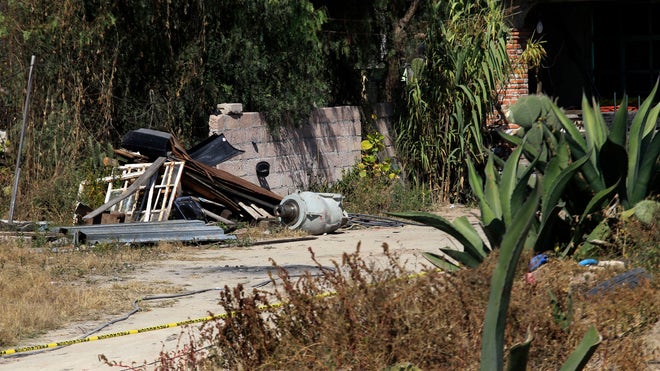
Six people have reportedly been admitted to a hospital in Mexico for radiation exposure after they came into contact with, or were in the vicinity of, stolen containers of highly radioactive cobalt-60.
Earlier reports indicated that the stolen containers had been broken open, and if this is the case, one expert said any patient who came into direct contact with the radioactive material may be vulnerable to central nervous system failure – a condition that results in the swelling of the brain and paralysis, and can lead to death in a matter of hours.
“All you can do is supportive care, perhaps steroids and IV fluids and monitoring and doing what you can,” Dr. James O’Donnell, division chief of nuclear medicine at the University Hospitals Case Medical Center in Cleveland, told FoxNews.com. “If you know someone is exposed above (a certain) point, if they do experience central nervous system collapse, our experience in [the] medical world is there’s not an awful lot you can do, it’s not likely to be successful and they’re likely to die.”
Cobalt-60 is an isotope typically only used in machinery, or in radiation therapy for cancer patients, according to O’Donnell. The health effects of exposure to cobalt-60 depend upon the length of time a person is exposed, their distance from the radioactive material, and whether or not any type of shielding was present – for example, if the radioactive material was stored in a container.
While any patients who experienced direct contact with cobalt-60 may be at risk of death, O’Donnell said that others who were simply in the vicinity of the material may experience lesser side effects, such as skin burns or blisters, or gastrointestinal problems.
“With the kinds of exposures they were getting, I would guess it isn’t going to be really hyper-acute, like a bomb, but more gastrointestinal, which means they could get cramping, nausea, vomiting, bleeding that would be hard to control,” O’Donnell said.
Reports indicate that one patient admitted was experiencing dizziness and vomiting, according to FoxNews.com.
Risk to hospital workers
Depending on whether or not the admitted patients experienced direct contact with cobalt-60, other patients or hospital workers may be at some risk for exposure to the radioactive material, O’Donnell noted.
“If someone is (externally) exposed to gamma rays, the treatment of the patient is external and there’s no real hazard to any health care personnel or anyone taking care of them. You’re not going to catch someone else’s sunburn,” O’Donnell said. “But if they broke into the container and scraped it, or got it on them, now they’re contaminated and if someone else were to get it on them, now they could be exposed because the actual source of the radiation is there.”
However, he noted that most hospitals are equipped to deal with radiation exposure and are well-versed on techniques that can limit the exposure of hospital workers, or other patients.
“Everything stops, you try to put down absorbent paper, cover things up, cover things with a lead apron, try to isolate the contamination away from people. Then clean up the patient, wash them up, hose them off,” O’Donnell said. “And that’s where the radiation safety people at the hospital get involved with radiation detectors, and try to get (the radiation) back down to the background level.”
Any hospital with a radiology department would have access to dosimeters, which track exposure to radiated energy, according to O’Donnell. As a result, they would be able to ensure that hospital workers limit their exposure. Long-term exposure to radiation has been associated with an increased risk for certain cancers like lymphoma or leukeumia.
“You can never say the risk of anything is zero, but the foreseeable risk would be low enough for occupation workers,” O’Donnell said. “It’s based on our experience that for people who get no more (a certain amount of exposure), there’s no increase in cancers.”
Source: healcon

